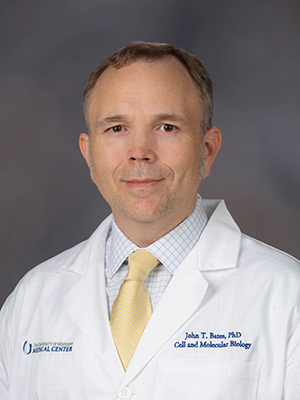What to know about potential COVID-19 vaccines
Editor's Note: This story was updated on August 27.
Vaccines usually take years or even decades to develop. The COVID-19 pandemic has researchers working as fast as possible to limit the spread of the virus that has already caused more than 18 million infections and 700,000 deaths worldwide.

Dr. John Bates, assistant professor of microbiology and immunology at the University of Mississippi Medical Center, said immunizations must go through multiple preclinical and clinical trials before gaining approval.
Generally, “a Phase 1 Clinical Trial asks if it is safe, Phase 2 asks does it produce an immune response and Phase 3 asks if that response is protective against the virus,” said Bates, whose research involves vaccine development for other infectious diseases.
To combat COVID-19, the U.S. Government has put that process into warp speed, with the goal of making 300 million doses of a safe, effective vaccine available by early 2021.
Across the globe, researchers are working more than one hundred versions of a COVID-19 vaccine, but most are still too early in their studies to know if they are effective. However, eight candidates are preparing to enter or have already started critical Phase 3 trials. One of these trials, led by the National Institutes of Health, will test a vaccine it is developing with the pharmaceutical company Moderna. Announced July 27, this study plans to enroll about 30,000 people in the United States.
Bates said this final testing phase could be the longest since it requires more participants and must last long enough to measure the vaccine’s effectiveness.

“Having a safe and effective vaccine distributed by the end of 2020 is a stretch goal, but it’s the right goal for the American people,” said Dr. Francis Collins, NIH director, about the agency’s vaccine trial. “The launch of this Phase 3 trial in record time while maintaining the most stringent safety measures demonstrates American ingenuity at its best and what can be done when stakeholders come together with unassailable objectivity toward a common goal.”
Bates said it is reasonable to expect that the trial will have results by the end of 2020.
“The fact that this virus is still widely circulating in the community should make it easier to conduct the trials,” he said.
The larger question is how effective the vaccine candidate will be. There are no approved vaccines against other coronaviruses. The available vaccines for other respiratory infections, such as influenza, do not provide long-term protection, Bates said.
When trial results do come out, people should keep in mind that measuring vaccine effectiveness is more than just counting how many recipients do or do not get sick.
“My expectation of a vaccine is that it will keep people from dying,” Bates said. “Someone who receives a vaccine may still get sick if they contract a virus, but they may not get as sick or be as contagious as someone who didn’t receive the vaccine,” similar to what we expect of the seasonal flu shot.
Vaccination programs are a critical part of public health because they are the most efficient way to produce herd immunity, which protects people more susceptible to infections. While herd immunity does not prevent all instances of transmission, it does limit community spread.
Bates said determining how many people must be immune to the disease to produce this herd effect depends on the reproductive rate of the virus.
“For a virus with a reproductive rate of 10, that means that one infected person, on average, transmits the virus to 10 other people,” he said. When the reproductive rate is high, more people must be immune to build herd immunity.
For the measles virus, which has a reproductive rate of about 15, “95 percent of the population must be immune to prevent widespread infection,” Bates said. For SARS-CoV-2, the virus that causes COVID-19, the reproductive rate is around three and immunity must be around 70 percent.
For context, about two percent of Mississippians have had a confirmed COVID-19 diagnosis since March 11. Developing herd immunity to this virus through infection is not a feasible solution, as emphasized by both Gov. Tate Reeves and State Health Officer Dr. Thomas Dobbs in their news conferences and social media statements.
Bates agrees that this approach will not work. What will work is a safe, effective and well-tested vaccine that reaches the public quickly. So far, that goal seems feasible.
“What’s unique about [the COVID-19 vaccine trials] is that companies are already producing hundreds of millions of doses of their vaccines before the trials are finished,” Bates said.
The above article appears in CONSULT, UMMC’s monthly e-newsletter sharing news about cutting-edge clinical and health science education advances and innovative biomedical research at the Medical Center and giving you tips and suggestions on how you and the people you love can live a healthier life. Click here and enter your email address to receive CONSULT free of charge. You may cancel at any time.



